
NHPRC News -- April 2018
April 2018
Inside the Commission
Christopher Eck named Executive Director
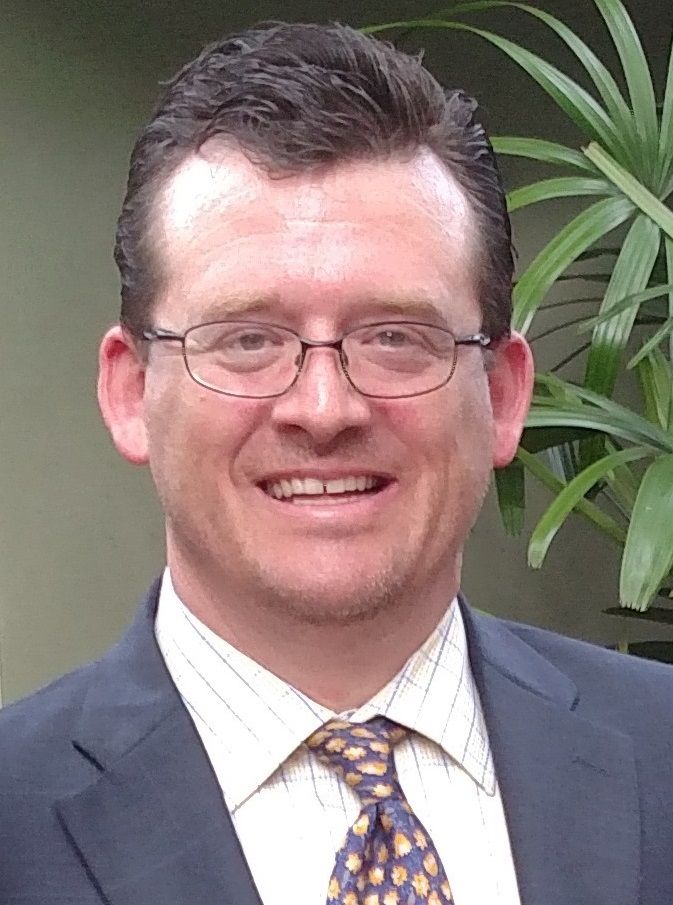 The National Historical Publications and Records Commission welcomes Christopher Eck as its new Executive Director.
The National Historical Publications and Records Commission welcomes Christopher Eck as its new Executive Director.
“I am honored to serve as the NHPRC’s executive director and to work with its highly respected professional staff in support of the Commission’s work across the nation to make America’s historical records more accessible to everyone," Chris said. "Through its collaboration with the National Archives, the NHPRC will continue its leadership role in working with its partners to develop innovative ways to connect the American people with their documentary heritage.”
Chris comes to the National Archives from the Defense POW/MIA Accounting Agency as its Terrestrial Archaeology Program Manager for the Strategic Partnerships Directorate. Prior to that position, he worked as the Federal Preservation Officer for the First Responder Network Authority, as Cultural Resources Program Manager for the Air National Guard headquarters, and as Historic Preservation Officer for the General Services Administration’s regional headquarters in Atlanta.
He has also led the Miami-Dade Office of Historic Preservation as its Executive Director and was Administrator and County Historic Preservation Officer for the Broward County Historical Commission. He was worked on the boards of the Fort Lauderdale Historic Preservation Board, the Florida Trust for Historic Preservation, and as a library visiting committee member for Loyola University New Orleans.
Chris earned a B.A. in History from Loyola University New Orleans, an M.A. in History and Historical Archaeology from the University of Massachusetts Boston, and a J.D. from the University of Miami. Two of his most recent publications include the book, Southern Maryland’s Historic Landmarks (Arcadia 2016), and an article, “Preserving Heritage: The Role of Media,” in The Encyclopedia of Global Archaeology (Springer Science 2014). For over 20 years, Chris has been married to Tracy Allen-Eck, and they live in Virginia with their two children.
FY 2018 Budget Signed and November Grants Awarded
The President has signed the FY 2018 Consolidated Appropriations Act, providing full-year funding for the Federal Government, including the National Archives. The Act provides $6 million for National Historical Publications Records Commission (NHPRC) grants.
The first round of awards are 31 grants totaling $2,599,400 to projects being undertaken in 27 states, pending appropriations of a final budget for FY 2018. A complete list of grants is located here.
A new program, Access to Historical Records: Major Initiatives, designed to assist archives and historical records repositories collaborate and take on large-scale challenges, awarded $1,082,147 to five projects:
- Moving Image Preservation of Puget Sound to collaborate with four major institutions to process and digitize over 1,200 videotapes documenting the region’s history and culture;
- the University of New Orleans collaborate with Cornell University and the University of Alabama to digitize and provide online access to at least 40,000 fugitive slave advertisements;
- the University of Georgia to digitize and publish online approximately 4,000 hours of public radio and televisions submitted for the Peabody Awards;
- the University of California, Merced to digitize approximately 180,000 pages and 2,000 photographs from the University of California Cooperative Extension from 20 county offices;
- and California State University, Dominguez Hills to digitize 10,400 archival records related to Japanese-American history with an emphasis on World War II interment and post-war history from eight institutions.
Publishing grants totaling $820,050 went to six publishing projects, including the papers of Thomas Jefferson, John Adams and the Adams Family, Eleanor Roosevelt, Presidential Recordings, Clarence Mitchell, Jr., and the Documentary History of the Ratification of the U.S. Constitution and Adoption of the Bill of Rights.
Grants totaling $697,203 went for State Board Programming grants to enable 20 state historical records advisory boards to carry out their mission to support archival education and strengthen the nation’s archival network.
Mellon-NHPRC Partnership
After exploring issues and challenges in building a sustainable system for the digital publication of historical records collections, the Andrew W. Mellon Foundation and the National Historical Publications and Records Commission (NHPRC) formed a partnership called the Digital Edition Publishing Cooperatives program. With funding from the Mellon Foundation, eight planning grants were awarded earlier this year to:
- Bucknell University for REED London: Creating Collaborative Environments for Editorial Publication
- Kentucky Historical Society for the Nineteenth Century Digital Cooperative
- Massachusetts Historical Society for a 21st-Century Digital Platform for 19th-Century Analog Content
- Stanford University for the Modern African American Freedom Struggle Digital Publishing Cooperative
- Texas A&M University for ARCScholar: A Digital Publishing Cooperative
- University of California Santa Cruz for the Scholarship in 3D Digital Edition Publishing Cooperative
- University of Virginia for the University of Virginia Digital Publishing Cooperative: Developing Infrastructures for the Creation, Publication, and Discovery of Digital Scholarly Editions and Projects
- Wheaton College for the Digital Edition Publishing Cooperative for Historical Accounts (DEPCHA)
Each of the eight project teams receiving funding will design a cooperative infrastructure for publication, including digital repositories and discovery tools.
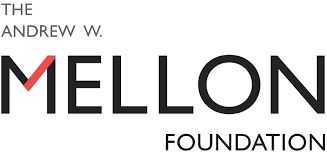 “Assembling primary source evidence in critical scholarly editions is one of the humanities’ most important contributions to our collective understanding of the world and its people,” said Donald Waters, senior program officer at the Mellon Foundation. “Since the early 1990s, scholars have used the digital medium to present these editions to the public, especially when the relevant evidence is in various formats, including texts, maps, audio, and still and moving images. With support from the eight grants in the Mellon-NHPRC Digital Edition Publishing Cooperatives Program, scholars will be collaborating to find common platforms, tools, procedures, and other economical means to be even more effective in creating and publishing critical editions of vital primary source evidence.”
“Assembling primary source evidence in critical scholarly editions is one of the humanities’ most important contributions to our collective understanding of the world and its people,” said Donald Waters, senior program officer at the Mellon Foundation. “Since the early 1990s, scholars have used the digital medium to present these editions to the public, especially when the relevant evidence is in various formats, including texts, maps, audio, and still and moving images. With support from the eight grants in the Mellon-NHPRC Digital Edition Publishing Cooperatives Program, scholars will be collaborating to find common platforms, tools, procedures, and other economical means to be even more effective in creating and publishing critical editions of vital primary source evidence.”
Archivist of the United States David S. Ferriero said, “At the National Archives, our very mission is to make records accessible. We are honored to be part of this project and delighted to join with the Andrew W. Mellon Foundation to help make our nation's historical records more widely available to anyone, anywhere, and at no cost. These cooperatives will explore technologies to revolutionize online historical research."
This is the first of a two-stage process for planning and implementation. During the one-year planning stage, each team will develop a proposal for implementing a Digital Edition Publishing Cooperative. At a second stage, after reviewing the submitted proposals in 2019, the Mellon Foundation and NHPRC anticipate awarding three implementation grants between $350,000 and $500,000, each for up to three years, for a total of up to $1.25 million.
Upcoming Grant Deadlines
Publishing Historical Records in Documentary Editions
For projects to publish documentary editions of historical records.
This program has two deadlines:
- Final Deadline: June 13, 2018
- Final Deadline: October 4, 2018
State Board Programming Grants
For projects that strengthen the nation’s archival network through activities undertaken by state historical records advisory boards.
- Final Deadline: June 13, 2018
News from the Field
The State of State Electronic Records
"Despite years of efforts by state archivists and records managers, digital government records remain in danger of being lost, deleted, misplaced, or misappropriated in many states." So begins the executive summary of 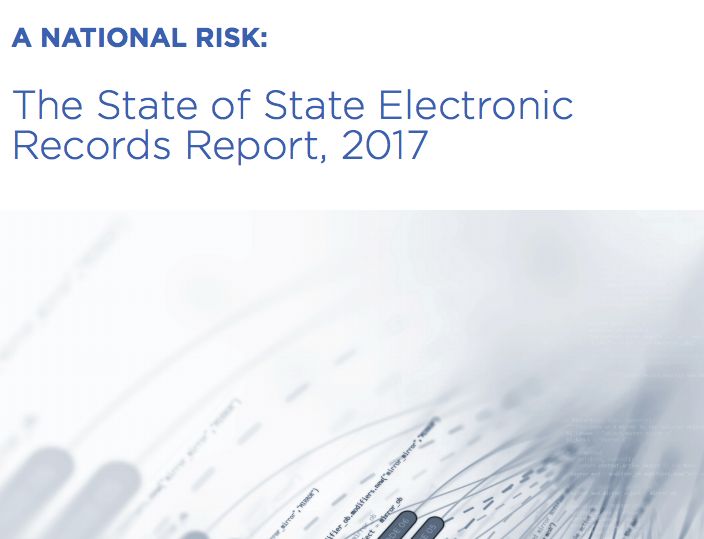 A National Risk: The State of State Electronic Records Report, 2017. Published by the Council of State Archivists, A National Risk points out that state and territorial governments spend only .0007 percent of their budgets on archives and records management, and that "our state governments are in danger of losing important digital information that can never be retrieved, putting our nation and its identity at risk."
A National Risk: The State of State Electronic Records Report, 2017. Published by the Council of State Archivists, A National Risk points out that state and territorial governments spend only .0007 percent of their budgets on archives and records management, and that "our state governments are in danger of losing important digital information that can never be retrieved, putting our nation and its identity at risk."
Of the 56 state and territorial governments, only 15 archives are providing standard management and care for electronic records.Twenty-one have electronic records programs, but they do not address all stages of the life cycle, and 15 have started electronic records programs, but little or nothing has been implemented. Three states and two territories have not yet begun tackling electronic records.
A National Risk lays out how the Council of State Archivists plans to approach the overall capability of state archives to manage electronic records and digital preservation work, but the report is a warning that while strides have been made since the 2011 State Electronic Records Initiative (SERI) began, much remains to be done. The NHPRC helped fund SERI as well as CoSA's Program for Electronic Records Training, Tools, and Standards (PERTTS).
Visit the CoSA website to read A National Risk online.
The Natural Legacy of Gloria Anable
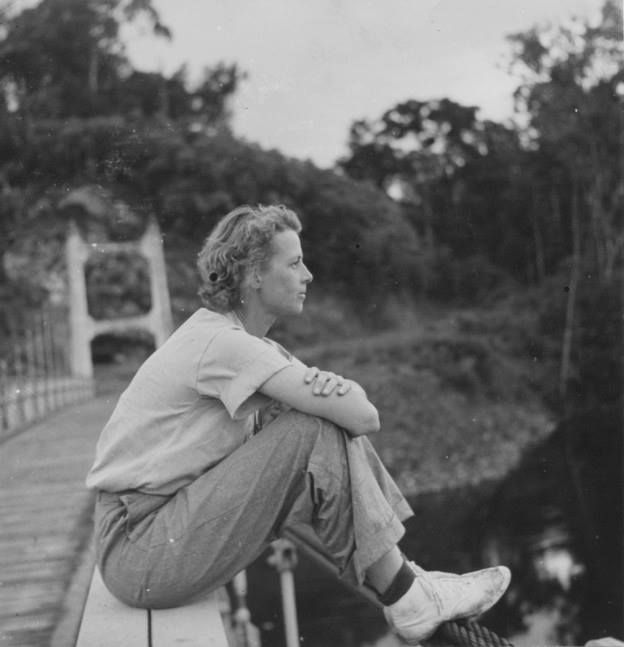 Gloria Hollister Anable (1900-1988) was an American explorer, scientist, and conservationist. She helped preserve one of the last old-growth forests in the United States, dove to a record 1,208 feet in a bathysphere, and worked in the first Red Cross blood bank in Brooklyn during World War II.
Gloria Hollister Anable (1900-1988) was an American explorer, scientist, and conservationist. She helped preserve one of the last old-growth forests in the United States, dove to a record 1,208 feet in a bathysphere, and worked in the first Red Cross blood bank in Brooklyn during World War II.
This remarkable woman was born in New York City and studied zoology at the Connecticut College for Women and at Columbia University. Three years later, she applied for a position with the naturalist William Beebe in his Department of Tropical Research of the New York Zoological Society (now the Wildlife Conservation Society), specializing in fish osteology, and she made record-setting dives in a Bathysphere off the coast of Bermuda in the 1934. Two years later she undertook her own expedition, exploring 200 miles in the jungles of Guyana.
During the 1950s, she helped to found the committee that preserved that Mianus River Gorge, which subsequently became the Nature Conservancy’s first land project.
The NHPRC is proud to have supported a project at the Wildlife Conservation Society to preserve her papers and the Department of Tropical Research collection. Read more about Gloria Hollister Anable at the WSC website.
History in the Age of Text Search
As part of our Strategic Plan to reach out to collaborate with more organizations, the NHPRC initiated a collaboration with staff of the American Historical Association to organize a five-session symposium, “Primary Sources and the Historical Profession in the Age of Text Search,” held at their annual meeting in January. Through a series of roundtable discussions, historians, librarians, archivists, technologists and digital humanists explored how the emergence of digital history is reshaping the way historians work, how they are trained, and how they teach. One of the more important themes to emerge from these discussions was a focus on how search engines influence discovery and use of historical records.
In “Search History: Making Research Transparent in the Digital Age,” in the March issue of AHA’s Perspectives on History, Stephanie Kingsley Brooks provides insights from two of the panel discussions on the new methodological discussions taking place in the field. One of the undercurrents of the panels was expressed by Alison Langmead from the University of Pittsburgh: “I think we need to train every humanist [in how to] sense the digital.”
Sensing the digital is an apt phrase for the whole new and rapidly changing environment in which historians and others must adapt to new ways of working. The daily addition of digitized materials to the Web, the invisible algorithms behind search engines, and the relative ease and speed of finding some type of answers (complete or partial) to research questions—the complexities of the Age of Text Search are shaping the work of archivists and historians alike.
The NHPRC is continuing this conversation at the April meeting of the Organization of American Historians, through two roundtable discussions, the first led by William Thomas III, who serves as the AHA representative to the Commission, and the second by Darrell Meadows, NHPRC Director for Publishing.
Lora Webb Nichols and Life in Wyoming
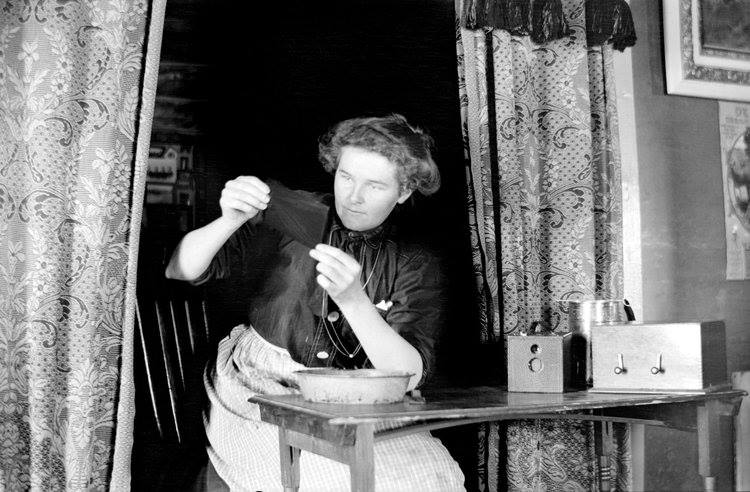 As part of an NHPRC grant to the state historical advisory Board, Wyoming has awarded the Grand Encampment Museum a grant to digitize the Lora Webb Nichols Collection to provide access to it on its website. Ms. Nichols was a noted photographer and her collection includes photos, negatives, diaries, and scrapbooks.
As part of an NHPRC grant to the state historical advisory Board, Wyoming has awarded the Grand Encampment Museum a grant to digitize the Lora Webb Nichols Collection to provide access to it on its website. Ms. Nichols was a noted photographer and her collection includes photos, negatives, diaries, and scrapbooks.
The Lora Webb Nichols collection includes photographs, diaries, and other items that date to the turn of the 20th century through the 1950s. Lora Webb Nichols (1883-1962) documented Encampment and her world through her diary and her photographs. For her sixteenth birthday, a beau gave her a camera, and at Christmas that year “Pop” presented her with a developing outfit. The Kodak became Lora’s instrument of liberation. It guaranteed her access to the claims and mines, the tram stations, smelter, tie camps and river drives. Her many portraits of women, children, and babies were joined by those of teamsters, miners, ranchers and homesteaders, valley pioneers and saloon keepers. Lora’s legacy began with her first incredible photograph of “Mama in the door,” continued through the accumulation of her years as a professional photographer, and was increased by the work of others which she begged and borrowed.
There's a wonderful video from Wyoming PBS on Lora Webb Nichols and the Grand Encampment Museum has a special focus on women of the Mountain West.
Dorothy Day on the Air
“Don't call me a saint. I don't want to be dismissed that easily."
Dorothy Day (1897 – 1980) was an American journalist and social activist, and co-founder of the Catholic Worker movement. In 1927, at age 30, Day converted to Catholicism, and a few years later started The Catholic Worker, a popular newspaper promoting Catholic teachings. And she would later work to establish Catholic settlement houses for the poor and needy, particularly the most difficult people. The Atlantic Monthly onc e called her "a saint for difficult people."
e called her "a saint for difficult people."
She herself was a radical, but her influence on social justice issues, guided by Catholic principles, remains relevant four decades after her death. Pope Francis himself highlighted the legacy of Dorothy Day and the Catholic Worker Movement in his 2015 address to the United States Congress. The Pope called her one of "four great Americans," along with Abraham Lincoln, Martin Luther King Jr. and Thomas Merton.
In 1960, Dorothy Day sat down with Eugene Boyle to discuss the movement's campaign for world peace. Through a grant from the NHPRC, Pacifica Radio Archives was able to preserve and publish the interview online. You can find out more info at From the Vault and listen to the program on SoundCloud.
May Theilgaard Watts Reading the Landscape
 What do trees and archivists have in common?
What do trees and archivists have in common?
A grant from the NHPRC to the Illinois Historical Records Advisory Board enabled them to "re-grant" funds to Illinois projects, including an award to the Morton Arboretum's Sterling Morton Library to digitize and catalogue the unique artwork and archival resources of May Theilgaard Watts (1893-1975) -- including this winning image of how trees keep records!
Inspired by the work of Henry C. Cowles (whom she referred to as the "great and first American ecologist" in the forward to her book, Reading the Landscape), May graduated with a Bachelor of Science in botany and ecology from the University of Chicago. In 1942 she became a staff naturalist at the Morton Arboretum in Lisle, Illinois, teaching and creating programming that included botany, ecology, and geology, as well as gardening, sketching, nature literature, and creative writing.
She authored several books and guides that helped non-scientists to interpret the landscape. Her 1957 Reading the Landscape was among the most widely read and used for decades by educators. Watts described places ranging from backyard gardens to the Indiana Dunes to the Rocky Mountain timberline. She wrote a similar volume, Reading the Landscape of Europe. She extended her knowledge of the natural world to the public in a column written for the Chicago Tribune, and had an educational horticulture program on public television. Watts also led efforts to establish the Illinois Prairie Path on an abandoned railroad line.
You can see more of her work at https://acorn.mortonarb.org/Detail/entities/554